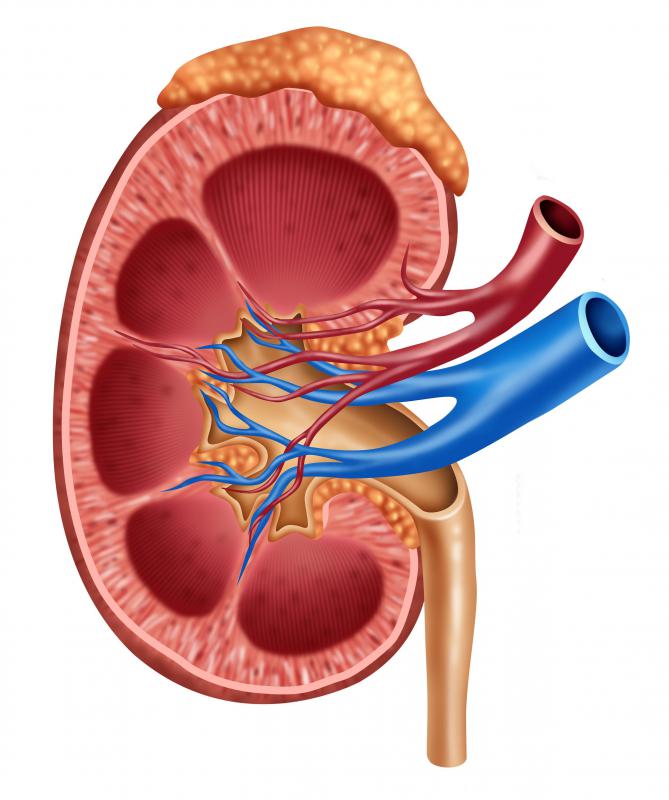At WiseGEEK, we're committed to delivering accurate, trustworthy information. Our expert-authored content is rigorously fact-checked and sourced from credible authorities. Discover how we uphold the highest standards in providing you with reliable knowledge.
What is an Adenectomy?
An adenectomy is the removal of a gland. A gland is a group of cells or an organ specialized to secrete or excrete materials not necessary for their metabolism. There are two types of glands. Exocrine glands secrete through a duct, or channel. Endocrine glands, which do not have a duct, rely on secreting through the basal lamina. The basal lamina is a thin sheet or membrane.
Common exocrine glands include sweat glands, mammary glands and saliva glands. Organs of the exocrine gland system include things like the stomach, liver and pancreas. Some organs, such as the liver or stomach, are considered both exocrine and endocrine.

Endocrine glands are involved in the release of hormones, and play an important role in growth, puberty, tissue function and metabolism. Common endocrine glands include the hypothalamus, the pituitary, the thyroid, and the adrenal glands. Organs considered an important part of the endocrine glandular system include things like the heart, skin, kidney and adipose or fat tissue.
An adenectomy refers to the surgical removal of an exocrine or endocrine gland. There are different levels of gland removal. A total adenectomy, for example, is the total removal of the gland. Common examples of a total adenectomy include a tonsillectomy or a total thyroidectomy.
Part of the gland can be removed. These partial removals are often referred to as a subtotal or partial adenectomy. A partial removal of the gland is sometimes required when attempting to remove a tumor or growth.
Common reasons for an adenectomy include, but are not limited to, masses or tumors which interfere with the gland’s function, and primary cancers on the gland. Certain medical conditions which interfere with gland function may also require all or part of the gland to be removed.
Myasthenia gravis, for example, is an autoimmune disease that affects the way nerves communicate with the muscles. This disease makes the immune cells attack the neurotransmitters, or the chemical messages, between the nerves and muscles produced by the thymus gland. This condition may require the removal of the thymus gland.
The technique used in an adenectomy depends on the location and the level of removal, whether partial or total. The size of the growth or tumor to be removed, if necessary, is also taken into consideration. Methods range from standard incision-based surgical procedures to laparoscopic techniques. A laparoscopic technique involves surgery through a thin lighted tube.
AS FEATURED ON:
AS FEATURED ON:











Discuss this Article
Post your comments